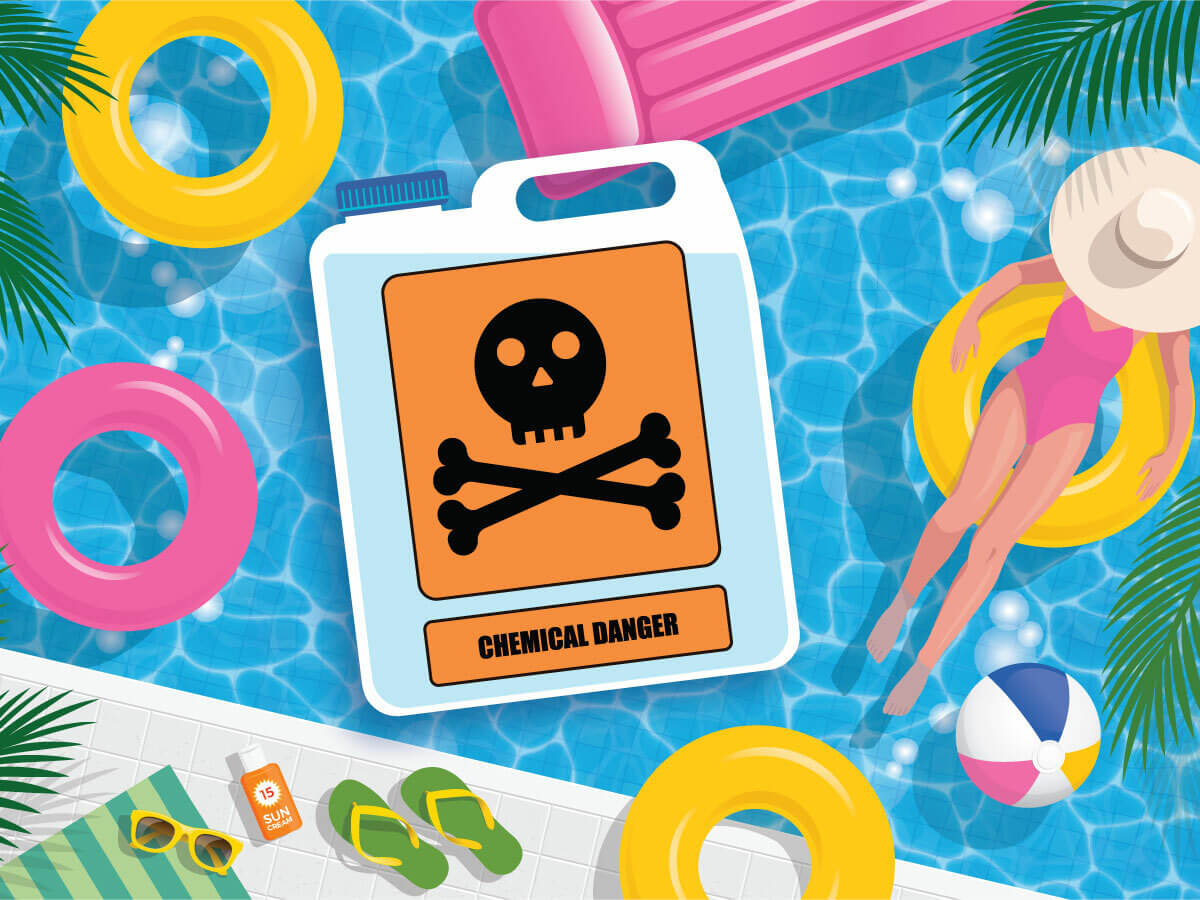
From controlling bacteria in pools to making drinking water more safe to consume, chlorine is used in a variety of different ways around the world. America is no different, and demand for chlorine among U.S. consumers is high. If you’re looking to bring chlorine into the U.S. to satisfy some of this demand, there are some important details you need to be aware of.
Key Takeaways
The complete guide below provides you with everything you need to know to safely import chlorine into the U.S.
Chlorine is classified under Harmonized Tariff Schedule (HTS) code 2801.10.00.00 and is generally a duty-free import. In the table below, I’ve listed the top five exporters of this in-demand chemical to the United States for the year 2023.

Between the absence of duties and the relatively simple classification of chlorine, it may seem like there’s less room for error when importing this chemical compared to other commodities. However, given its potential dangers, it is strictly regulated by two partner government agencies of CBP.
Chlorine is used to produce many common products. However, it’s also considered to be a dangerous chemical because of its toxicity to humans and animals in high volume.
The EPA regulates the way chlorine is imported into the U.S. in order to protect American citizens. Even short-term exposure to low concentrations of the chemical is known to irritate the lungs, eyes, and respiratory tract.
Long-term exposure, especially in gaseous form, can cause acute illness and even death. Chlorine can also burn skin, cause vomiting, and fill lungs with enough fluid to be fatal.
Chlorine is covered under the Toxic Substances Control Act (TSCA) by the EPA. Section 13 of this act specifically covers items produced and then imported through customs. This part of the document requires chlorine to be in compliance with all statutes before you even begin the actual process of importation.
The EPA requires that either a negative or positive certification be provided for all toxic substances that are to be imported. In the case of chlorine, a positive certification is used because it is regulated by the TSCA. This certification can be submitted either electronically or in writing, stating the following:
“I certify that all chemical substances in this shipment comply with all applicable rules or orders under TSCA and that I am not offering a chemical substance for entry in violation of TSCA or any applicable rule or order thereunder.”
Once signed and submitted, this is a binding agreement between yourself and the U.S. Government that you understand their expectations and are committed to carrying it out in good faith.
Related: Importing Chemicals Into The US: TSCA Compliance and More
We’ve established that chlorine must comply with TSCA regulations, but the U.S. Department of Transportation (DOT) also has its own stipulations for the chemical.
The DOT classifies chlorine as a hazardous material (HAZMAT). This means the chemical must be accompanied by a yellow, diamond-shaped logo with a picture of a fire and the number 5.1 at the bottom. The symbol and number combination denotes that chlorine is an oxidizing chemical capable of spontaneous combustion.
There is still some differentiation on labeling depending on whether the chlorine is going directly to market or if it’s headed to another location to be stored and labeled for later resale. When a chlorine product hits store shelves or is shipped directly to a customer, it must be labeled appropriately.
If the product is going to a warehouse or another facility prior to sale, it is not mandatory that the consumer labeling be in place. However, a Material Safety Data Sheet (MSDS) should be included for the benefit of those handling or storing such items. The sheet was created by the United States Department of Labor’s Occupational Safety and Health Administration (OSHA).
Among other important information, the MSDS lays out the following details:
In addition to providing the MSDS, the chlorine must be appropriately labeled as a chemical substance during shipping.
While we’ve covered the specific requirements of importing chlorine, there are also more general aspects worth going over that cover any attempt at bringing goods into the U.S. Chlorine falls under these as well.
First and foremost, you will need a customs bond to cover the tariffs you’d be found to owe on your shipment. As a product that is under the regulation of a U.S. regulatory body, your chlorine — regardless of the shipment’s monetary value — automatically must have a customs bond.
A licensed customs broker can sell this bond to you as the importer. A bond can be bought either as a one-time use to cover a single shipment, or as a continuous use bond that will cover an unlimited amount of shipments over the course of a 12-month period.
You’ll also need to fill out general paperwork and documents used for any import transaction, including the Bill of Lading (BoL) and commercial invoice.
Related: How to Get A Customs Bond: A Guide for New Importers
One of the biggest challenges chlorine importers face is proving to CBP that their imported shipment adheres to the guidelines set forth under the TSCA.
To assist with this issue, the EPA actually provides a document — the Section 13 Import Compliance Checklist — that is a great resource to determine if your chlorine meets the standards for importation.

Schedule a consulting session with a customs clearance expert.
As stated earlier in the article, there is no duty on imported chlorine. If you choose to import the chemical from China, it will be subject to Section 301 duties. However, China isn’t a top exporter of chlorine, so this isn’t as much an issue as it can be with other commodities.
Keep in mind that even though chlorine is usually free of duties, you’ll still need an active customs bond to import the chemical in case any unexpected fees arise when your shipment reaches its point of entry.
Given the strict regulations surrounded imported chlorine, there’s a higher-than-average probability for mistakes to occur compared to less volatile goods. For this reason, it’s highly recommended to work with the knowledgeable brokers at USA Customs Clearance.
Our team of experts knows exactly what’s needed to safely and legally import chlorine to the U.S.
With the increased demand for this product over the last several years, CBP is on high alert for businesses looking to cut corners when importing chlorine. Thankfully, you can lean on our experienced and attentive team to ensure your shipment arrives without issue.
We can also provide:
When you’re ready to get moving, give us a call at (855) 912-0406 or contact us online. We’ll go step-by-step through everything you need to make sure your import transaction goes swimmingly.
 Copy URL to Clipboard
Copy URL to Clipboard
Add your first comment to this post